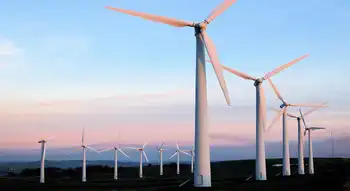Sugarcane to reach 26,000 MW by 2015
Most thermal plants fueled by biomass are concentrated in 13 countries that total 6,483 megawatts (MW). Global awareness toward fossil fuel prices and growing interest in alternative energy sources are expected to increase that capacity to 26,751 MW by 2015.
According to the International Sugar Organization (ISO), an intergovernmental body devoted to improving conditions of the world's sugar market, Brazil is the leader in this market. Brazil is increasingly turning to alternative power generation, fuels such as biomass, in order to increase its electricity supply and to reduce its dependence on hydropower.
Biomass power represents about 4.1% of the country's total installed capacity, with most of the biomass cogeneration based on sugarcane bagasse. The present capacity is 3,081 MW and it is expected to increase to 15,000 MW. The country has 370 sugar refineries, of which 48 are connected to the National Grid. About 16% of that capacity is exported.
In addition, Brazil has 406 MW under construction or awaiting government authorization to begin operation.
In order to reach the target of 15,000 MW, which represents 15% of Brazil's current generating capacity, more than $12 billion will need to be invested. According to Celso Zanatto Jr., a Brazilian expert in logistics and commerce at the country's southern power plants, 600 million tonnes of sugarcane bagasse is estimated for the next harvest in Brazil, equivalent to 1.97 million barrels of oil per day, representing Petrobras' daily production.
Other smaller countries, such as Guatemala, El Salvador and Ilhas Mauricios, also invest in sugarcane bagasse cogeneration as a renewable energy source. Guatemala has 15 sugar mills connected to the National Electric System. Contrary to Brazil, Guatemala and countries like Colombia produce bagasse during the whole year. They have bi-fuel boilers, which also run with oil.
ISO's latest report stated that most countries are trying to solve the inconvenience caused by the unavailability of fuel during the non-harvest period, when sugar mill power plants run on fossil fuels.
India is another major player in cogeneration produced from sugarcane bagasse. It has 2,200 MW installed, with half of the capacity connected to the national grid. India also has 3,000 MW expected to start operation soon. By 2015, India's cogeneration from sugarcane bagasse is expected to reach 10,500 MW.
The experiences with bagasse cogeneration in Brazil and India serve to illustrate possibilities as well as difficulties. There are excellent opportunities for other sugar-producing countries to enhance sustainable energy production from sugarcane biomass resources.
Related News

US Grid Gets an Overhaul for Renewables
WASHINGTON - The US took a significant step towards a cleaner energy future on May 13th, 2024. The Federal Energy Regulatory Commission (FERC) approved the first major update to the country's electric transmission policy in over a decade. This overhaul aims to streamline the process of building new power lines, specifically those that connect different regions. This improved connectivity is crucial for integrating more renewable energy sources like wind and solar into the national grid.
The current system faces challenges in handling the influx of renewables. Renewable energy sources are variable by nature – the sun doesn't always shine, and…




